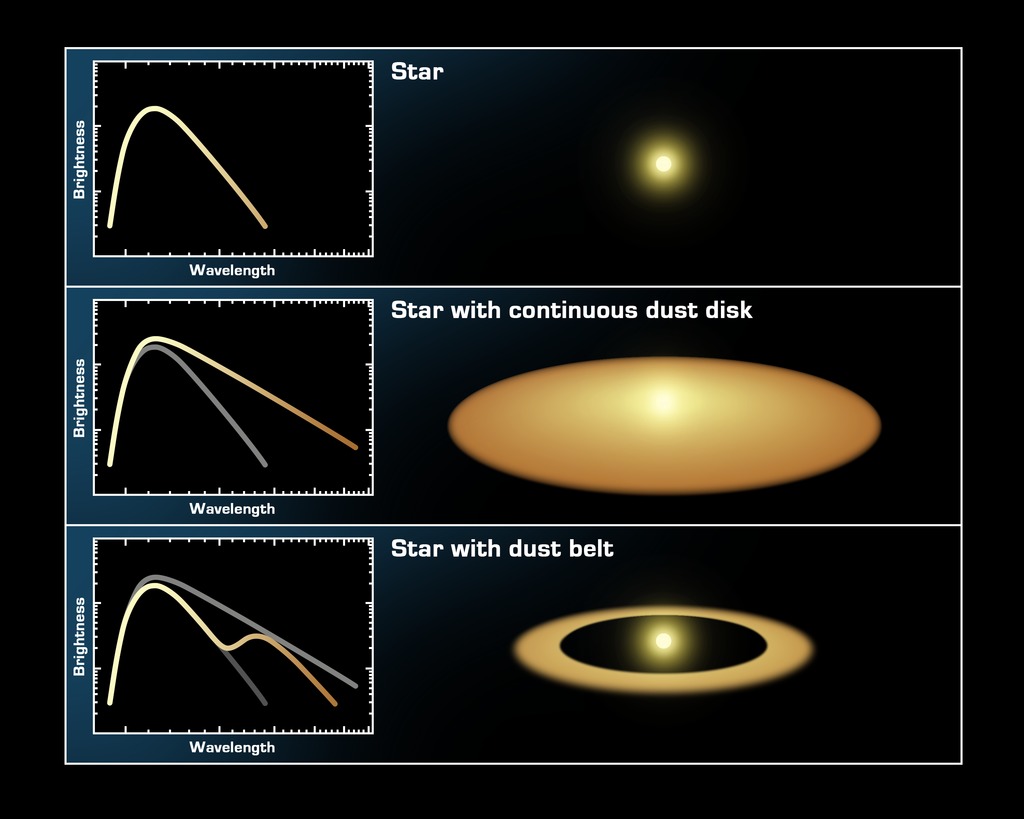
Credit: NASA/JPL-Caltech/T. Pyle (SSC)
Chart • December 14th, 2005 • sig05-026
sig05-026
How can you tell if a star is orbited by a narrow disk, or belt, of dust when the belt is too small to image directly? Astronomers can tell by measuring the temperature of the dust using infrared telescopes like the Spitzer Space Telescope. Just as the color of the burners on an electric stovetop turn from "red" to "white" hot as they get hotter, the temperature of an object can be determined from its color. Astronomers quantify the color of an object by measuring its spectrum, which is the intensity (brightness) of an object at several different wavelengths of light. The infrared wavelengths measured by Spitzer range from 3 to 160 microns.The top illustration represents the spectrum of a star with no disk. The distribution of light at any given wavelength follows a specific and well-known curve, determined by the laws of physics and the temperature of the star. Due to the star's high temperature, most of the light is produced at shorter wavelengths (the left side of the diagram),In the second diagram, we see the spectrum of a star with a continuous disk of dust around it. The dust is heated by the star, just as our earth is heated by the sun. However, the material is cooler than the surface of the star, so it emits most of its light at longer (infrared) wavelengths. In this object, there is an excess of infrared emission, which cannot be coming from the star itself. The disk is revealed. The smooth slope of the curve indicates that there is dust at many different temperatures, which can only happen if dust orbits the star in a continuous disk.In the third diagram we again see the spectrum of a star with a dusty disk around it, but in this case, the dust emits at a single temperature, which means that the dust is confined to a belt surrounding the star. The wavelength of the "bump" in the spectrum allows astronomers to measure this temperature, and from that determine how far from the star the belt must lay.
About the Object
- Name
- Type
- Star > Circumstellar Material > Disk
- Mission Graphics > Diagrams



